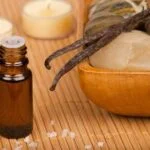Aromatherapy has gained immense popularity in recent years as people are increasingly seeking natural remedies and holistic approaches to their health and well-being. But how does aromatherapy actually work? In this article, we will delve into the scientific foundations of aromatherapy and explore the mechanisms behind its effectiveness.
Despite its long history, aromatherapy continues to captivate and intrigue individuals worldwide. The allure lies not only in its pleasant scents but also in the potential therapeutic benefits it offers. However, some skeptics question the scientific basis of this practice, wondering if it is simply a placebo effect or if there is indeed a molecular mechanism at play.
To address this curiosity surrounding aromatherapy’s scientific foundations, it is essential to understand its origin and history. Aromatherapy can be traced back thousands of years to ancient civilizations such as Egypt, Greece, and China, where aromatic plants were used for their medicinal properties. These fragrant substances were highly valued for their ability to promote physical healing and enhance emotional well-being.
Essential oils are the primary tools used in aromatherapy and are derived from various plant sources through a process known as extraction. These oils encompass a vast array of aromatic compounds that possess unique properties ranging from antimicrobial and anti-inflammatory to calming and uplifting effects. By harnessing these properties, aromatherapy aims to stimulate the body’s natural healing processes and restore balance to mind, body, and spirit.
So how exactly do these aroma molecules interact with our bodies? It all begins with our sense of smell, which plays a crucial role in aromatherapy. When we inhale an aroma, odor molecules bind to olfactory receptors located within our nasal cavity.
This triggers a cascade of biochemical reactions that ultimately send signals to our brain’s limbic system – the region responsible for emotions and memory formation. As a result, certain scents have the power to evoke strong emotional responses and influence our mood and well-being.
In the following sections, we will explore the scientific mechanisms underlying aromatherapy in more detail. We will examine the specific chemical constituents found within essential oils that contribute to their therapeutic effects. Furthermore, we will delve into the wide range of applications and benefits associated with aromatherapy, as well as important safety precautions to ensure responsible use.
By understanding the scientific foundations of aromatherapy, we can appreciate its efficacy and harness its potential to enhance our physical and emotional health. So let us embark on this aromatic journey together and discover the wonders of aromatherapy for ourselves.
Origin and history of aromatherapy
Aromatherapy has a rich and ancient history that spans across cultures and civilizations. Its roots can be traced back to ancient Egyptians, who were known to use aromatic herbs, resins, and oils in religious rituals, cosmetics, and medicine. The Chinese also incorporated aromatherapy into their practices, particularly in the form of herbal medicine. In India, Ayurvedic medicine utilized essential oils for therapeutic purposes.
The term “aromatherapy” itself was coined by a French chemist named René-Maurice Gattefossé in the early 20th century. Gattefossé accidentally discovered the healing properties of lavender oil when he used it to treat a burn on his hand. This serendipitous event sparked his interest in the medicinal benefits of essential oils and led him to explore their potential further.
In recent years, there has been a resurgence of interest in aromatherapy as people seek natural remedies for various health concerns. This renewed popularity is due to a growing awareness of the harmful effects associated with certain conventional treatments and medications. As individuals become more interested in holistic approaches to healing, they are turning to aromatherapy as an alternative or complementary therapy.
Today, aromatherapy is widely recognized and practiced around the world. It is used in various settings such as spas, wellness centers, hospitals, and even homes. Its versatility allows it to be incorporated into different forms such as inhalation (using diffusers or steam inhalation), massage (using diluted essential oils), or topical application (in the form of creams or lotions). Regardless of its specific application, aromatherapy continues to captivate people with its rich history and powerful therapeutic properties.
Essential oils and their properties
Essential oils are the cornerstone of aromatherapy and play a crucial role in its therapeutic effects. These oils are derived from various parts of plants, such as the flowers, leaves, stems, or roots, through processes like steam distillation or cold-press extraction. Each essential oil possesses a unique combination of chemical compounds that contribute to their specific properties and potential health benefits.
One of the fascinating aspects of essential oils is their diverse range of properties. Many essential oils exhibit antimicrobial properties, which means they have the ability to inhibit or destroy microorganisms such as bacteria or fungi. This makes them valuable for disinfecting surfaces or promoting wound healing. For example, tea tree oil has been widely studied for its potent antimicrobial activity.
In addition to their antimicrobial effects, essential oils also possess anti-inflammatory properties. They can help reduce inflammation in various systems of the body, including the skin and respiratory system. Lavender oil is known for its anti-inflammatory properties and is commonly used topically to soothe skin irritations.
Furthermore, essential oils can have analgesic effects by providing pain relief. Some oils like peppermint and eucalyptus have cooling effects that can alleviate headaches or muscle soreness when applied topically or inhaled. Their ability to interact with certain receptors in our bodies contributes to these pain-relieving effects.
Overall, understanding the properties of essential oils is crucial for harnessing their therapeutic benefits in aromatherapy practices. By selecting the right combination of oils with specific properties, practitioners can tailor their approach to address individual needs and promote overall well-being.
- Essential oils are derived from plants through processes like steam distillation or cold-press extraction.
- Each essential oil possesses a unique combination of chemical compounds that contribute to their specific properties.
- Many essential oils exhibit antimicrobial properties and can inhibit or destroy microorganisms.
- Essential oils also possess anti-inflammatory properties and can help reduce inflammation in various systems of the body.
- Some essential oils have analgesic effects and can provide pain relief.
The olfactory system and its role in aromatherapy
The olfactory system plays a crucial role in the field of aromatherapy, as it is responsible for our sense of smell and how we perceive different scents. In this section, we will delve into the science behind our sense of smell and explain how odor molecules interact with olfactory receptors in the nose.
Our olfactory system is made up of various components that work together to help us detect and interpret different smells. When we inhale an aroma, odor molecules are carried through the air and enter our nasal passages. These molecules then bind to specific receptors located in the olfactory epithelium, which is a small patch of tissue at the top of each nasal cavity.
Each odor molecule has a unique shape and chemical makeup, which allows it to selectively bind to specific receptor proteins on the sensory cells in our olfactory epithelium. When a molecule binds to its corresponding receptor, it triggers a series of events that eventually leads to the generation of electrical signals that are sent to our brain for processing.
Once these electrical signals reach the brain, they are first relayed to the olfactory bulb, which is responsible for initial processing and filtering of scent information. From there, the processed signals are transmitted to other regions of the brain including the limbic system, which is associated with emotions and memory.
This connection between scent and emotions helps explain why certain aromas can have such a profound impact on our mood and well-being. For example, inhaling lavender essential oil has been shown to have a calming effect on individuals experiencing stress or anxiety. This is believed to be due to lavender’s interaction with certain receptors in the olfactory system that can influence brain activity and promote relaxation.
To summarize, the olfactory system serves as the gateway for aromatherapy by allowing us to detect different scents and triggering various physiological responses in our bodies. The intricate process by which odor molecules interact with olfactory receptors highlights the scientific foundation behind aromatherapy and why it is able to have such powerful effects on our physical and emotional well-being. By understanding the role of the olfactory system, we can better appreciate the potential benefits that aromatherapy offers.
| Relevant Data |
|---|
| – Odor molecules bind to receptors in the olfactory epithelium |
| – Electrical signals are generated and sent to the brain for processing |
| – Processed signals reach the limbic system, influencing emotions and memory |
The limbic system and emotions
The limbic system plays a crucial role in the connection between scent and emotions in aromatherapy. This section will delve into the science behind this relationship and explain how inhaling certain aromas can influence mood and well-being.
The Limbic System: An Overview
The limbic system is a complex network of structures located in the brain, including the amygdala, hippocampus, hypothalamus, and cingulate gyrus. It is responsible for regulating emotions, behavior, memory formation, and other functions related to emotional responses. One of its key functions is processing sensory information and transferring signals to different parts of the brain, ultimately influencing our moods.
Scent and Emotional Response
Our olfactory system interacts closely with the limbic system, making scents particularly powerful when it comes to triggering emotions. When we inhale aromatic molecules from essential oils, they directly activate olfactory receptors in our nose. These receptors send signals through the olfactory bulb to the amygdala and hippocampus within the limbic system.
The Amygdala: The Seat of Emotional Processing
The amygdala is especially important in emotional processing. Studies have shown that it plays a significant role in emotional memory formation and fear conditioning. When exposed to pleasant or soothing scents like lavender or chamomile, the amygdala’s response may be calming and soothing. On the other hand, invigorating scents such as citrus or peppermint may stimulate feelings of energy or alertness by activating different areas within the amygdala.
The Hippocampus: Memory Formation and Associations
Located adjacent to the amygdala, the hippocampus is responsible for learning, memory encoding, and forming associations with different stimuli. In relation to aromatherapy, inhaling specific scents during certain experiences or activities may create a strong association between the scent and that particular experience. These associations can then be triggered in the future by the smell alone, evoking emotions, memories, and other responses.
Understanding how aromas interact with the limbic system provides insight into why certain essential oils are commonly used for specific emotional states, such as lavender for relaxation or citrus for mood upliftment. By leveraging the power of scents to influence emotions, aromatherapy offers a unique and scientifically supported approach to enhancing well-being.
The power of chemical compounds in essential oils
Examining the constituents responsible for therapeutic effects
One of the key factors that contribute to the effectiveness of aromatherapy is the chemical composition of essential oils. Essential oils are made up of a complex mixture of chemical compounds, which vary depending on the plant from which they are derived. These compounds interact with our body’s systems to produce therapeutic effects.
The science behind specific chemical constituents
Each essential oil contains a unique combination of chemical constituents, such as terpenes, esters, alcohols, and ketones. These compounds have been extensively studied and have demonstrated various therapeutic properties.
For example, some essential oils like lavender contain linalool and linalyl acetate, which have been shown to possess anti-anxiety and sedative effects when inhaled or applied topically. Other oils like peppermint contain menthol, known for its analgesic properties that provide relief from headaches when used topically or inhaled.
Evidence-based research supporting therapeutic claims
Numerous scientific studies have explored the mechanisms by which these chemical compounds exert their therapeutic effects. For instance, a study published in the Journal of Ethnopharmacology found that inhaling rosemary essential oil can enhance cognitive performance due to its high content of 1,8-cineole.
Another study published in the Journal of Alternative and Complementary Medicine demonstrated that inhaling lavender essential oil significantly improved sleep quality in participants with insomnia.
These findings support the use of aromatherapy as a complementary therapy for various conditions and highlight the importance of understanding the specific chemical constituents present in essential oils to maximize their benefits.
Overall, the power of the chemical compounds present in essential oils provides scientific validation for the efficacy of aromatherapy. By harnessing these natural substances and incorporating them into our daily routines, we can potentially enhance our well-being and promote overall health.
Aromatherapy applications and benefits
Aromatherapy has a wide range of applications and is used in various ways to achieve its beneficial effects. The most common methods of applying aromatherapy include inhalation, massage, and topical application. Each method allows the essential oils to be absorbed into the body in different ways, providing unique benefits.
Inhalation is one of the most popular ways to experience the therapeutic effects of aromatherapy. When essential oils are inhaled, odor molecules travel through the nasal passages and interact with olfactory receptors in the nose. This triggers a response in the limbic system of the brain, which is responsible for emotions and memory. Inhalation can have an immediate impact on mood and well-being, making it an effective way to promote relaxation or provide an energy boost.
Massage is another commonly used method for applying aromatherapy. By diluting essential oils with a carrier oil, such as coconut or jojoba oil, they can be safely applied to the skin during a massage. The essential oils are absorbed through the skin and enter the bloodstream, allowing their therapeutic properties to be distributed throughout the body. Massage with aromatherapy not only provides physical benefits such as pain relief and muscle relaxation but also enhances relaxation and promotes emotional well-being.
Topical application involves directly applying diluted essential oils to specific areas of the body. This method is often used for targeted relief from conditions such as headaches or muscle tension. Essential oils can be added to lotions, creams, or even bath water for this purpose. Topical application allows for localized absorption of the oils’ beneficial compounds into the skin and underlying tissues.
| Essential Oil | Benefits |
|---|---|
| Lavender | Promotes relaxation and sleep, helps reduce anxiety and stress |
| Peppermint | Relieves headaches, reduces nausea, improves focus and concentration |
| Tea Tree | Antimicrobial properties, helps treat acne and skin infections |
| Eucalyptus | Clears sinuses, relieves respiratory congestion, provides a cooling sensation |
It is important to note that while aromatherapy can provide numerous benefits, it is crucial to use essential oils safely and responsibly. Some essential oils may cause irritation or allergic reactions in certain individuals. It is advisable to perform a patch test before using any new essential oil topically and to carefully follow dilution guidelines. Additionally, certain essential oils may have specific contraindications for certain medical conditions or during pregnancy.
Overall, the applications of aromatherapy are vast and provide a natural means to promote physical and emotional well-being. Whether through inhalation, massage, or topical application, aromatherapy offers an accessible way for individuals to improve their health and quality of life.
Safety precautions and considerations
While aromatherapy can offer numerous benefits, it is important to approach its practice with caution and respect for safety guidelines. Essential oils are highly concentrated substances that should be treated with care. Here are some safety precautions and considerations to keep in mind when using aromatherapy:
- Dilution: Essential oils should never be applied directly to the skin without first diluting them with a carrier oil or other suitable medium. This helps to prevent skin irritation, allergic reactions, or sensitization. The recommended dilution ratio is typically 2-3% essential oil to carrier oil for topical use.
- Patch Testing: Before using any new essential oil or blend on your skin, it is advisable to perform a patch test. Apply a small amount of diluted oil onto an inconspicuous area like the inside of your forearm and wait for 24 hours to check for any adverse reactions.
- Inhalation Safety: When inhaling essential oils, it is important not to directly inhale from the bottle or diffuse undiluted oils into the air for prolonged periods. Doing so can cause respiratory irritation or allergic reactions. Instead, dilute essential oils appropriately according to diffuser instructions or use other safe methods such as inhalers or steam inhalation.
- Photosensitivity: Some essential oils, particularly citrus oils like bergamot, lemon, and grapefruit, can increase the skin’s sensitivity to sunlight and lead to sunburns or other unpleasant reactions. If you apply these oils topically, avoid direct sunlight for at least 12-18 hours after use.
- Quality of Essential Oils: To ensure maximum safety and efficacy in aromatherapy, it’s crucial to choose high-quality essential oils from reputable sources. Look for products that are labeled as pure, organic (if possible), and have undergone third-party testing for quality standards.
- Allergies and Sensitivities: Essential oils are potent substances, and some individuals may be allergic or sensitive to certain oils. It is recommended to perform an allergy test before using any new oil and to be aware of your personal sensitivities.
- Purity and Adulteration: Unfortunately, essential oils can be adulterated or diluted with synthetic substances, which can compromise their therapeutic properties and safety. Research the company’s reputation, sourcing practices, and ensure that you are purchasing pure essential oils.
By adhering to these safety precautions and considerations, you can enjoy the benefits of aromatherapy while minimizing potential risks. It is always advisable to consult with a qualified aromatherapist or healthcare professional if you have any specific concerns or medical conditions before incorporating aromatherapy into your self-care routine. With responsible use, aromatherapy can provide a safe and enjoyable experience for promoting overall well-being.
Conclusion
In conclusion, aromatherapy has a solid scientific foundation that supports its efficacy in promoting health and well-being. Throughout this article, we have explored the origin and history of aromatherapy, the properties of essential oils, the role of the olfactory system in aromatherapy, the influence of scents on emotions through the limbic system, and the power of chemical compounds in essential oils.
We have also discussed various applications and benefits of aromatherapy and shared safety precautions and considerations for using essential oils.
One key aspect that validates aromatherapy’s scientific foundations is the extensive research conducted on essential oils and their therapeutic effects. Numerous studies have demonstrated that certain chemical constituents found in essential oils possess antimicrobial, anti-inflammatory, analgesic, and other beneficial properties. These findings help to explain how inhaling certain aromas or applying essential oils topically can improve our mood, reduce stress levels, alleviate pain, promote relaxation, enhance sleep quality, boost concentration, and support overall well-being.
Moreover, it is important to mention that while natural remedies like aromatherapy can offer many benefits, they should be used responsibly. Following safety precautions such as diluting essential oils properly before use and consulting with a healthcare professional if you have specific health conditions or are pregnant is crucial in order to avoid any potential risks or contraindications.
In light of all this scientific evidence supporting the effectiveness of aromatherapy, I encourage you to explore the benefits of this ancient practice in your own life. Whether it’s through diffusing essential oils at home for relaxation or incorporating them into your skincare routine for their soothing properties, aromatherapy has a lot to offer when it comes to enhancing your physical and emotional well-being.
So go ahead and start exploring the world of aromatic essences – you might just discover a whole new level of self-care and vitality along the way.
Frequently Asked Questions
What is the theory behind aromatherapy?
Aromatherapy is a holistic healing practice based on the theory that certain scents or essential oils extracted from plants can promote physical and emotional well-being. The theory behind aromatherapy suggests that inhaling these aromatic compounds can stimulate the limbic system in our brain, which is responsible for emotions, memories, and behaviors.
It is believed that by interacting with this part of the brain, aromatherapy can evoke positive emotions, relaxation, and even help alleviate certain health conditions.
What is the mechanism of action of aromatherapy?
The mechanism of action of aromatherapy revolves around the inhalation or topical application of essential oils. When we inhale these oils, they enter our bodies through the olfactory system, which includes the nose and nasal passages. From there, they can travel to the brain and interact with various receptors in the olfactory bulb and other regions involved in scent perception.
This interaction triggers a cascade of physiological responses that are thought to be responsible for the therapeutic effects of aromatherapy. When applied topically, essential oils can also penetrate the skin and enter the bloodstream, where they may have further physiological effects.
What are the scientific benefits of aromatherapy?
While many people find subjective benefits from using aromatherapy, scientific research on its efficacy is still limited but promising. Some studies suggest that certain essential oils used in aromatherapy may have antimicrobial properties that can help kill or inhibit the growth of bacteria and fungi. In addition to their potential antimicrobial effects, some essential oils have shown anti-inflammatory properties in laboratory studies.
This suggests that they might help reduce inflammation when applied topically or inhaled. Furthermore, some research suggests that specific scents may impact mood and emotions by influencing neurotransmitters like serotonin and dopamine in the brain. Overall, while more high-quality studies are needed to confirm these findings conclusively, early research suggests that aromatherapy holds promise as a complementary therapy for various health conditions such as stress reduction, pain management, sleep improvement, and enhancing overall well-being.

Are you looking for a natural way to improve your health and wellbeing?
If so, aromatherapy may be the answer for you.





